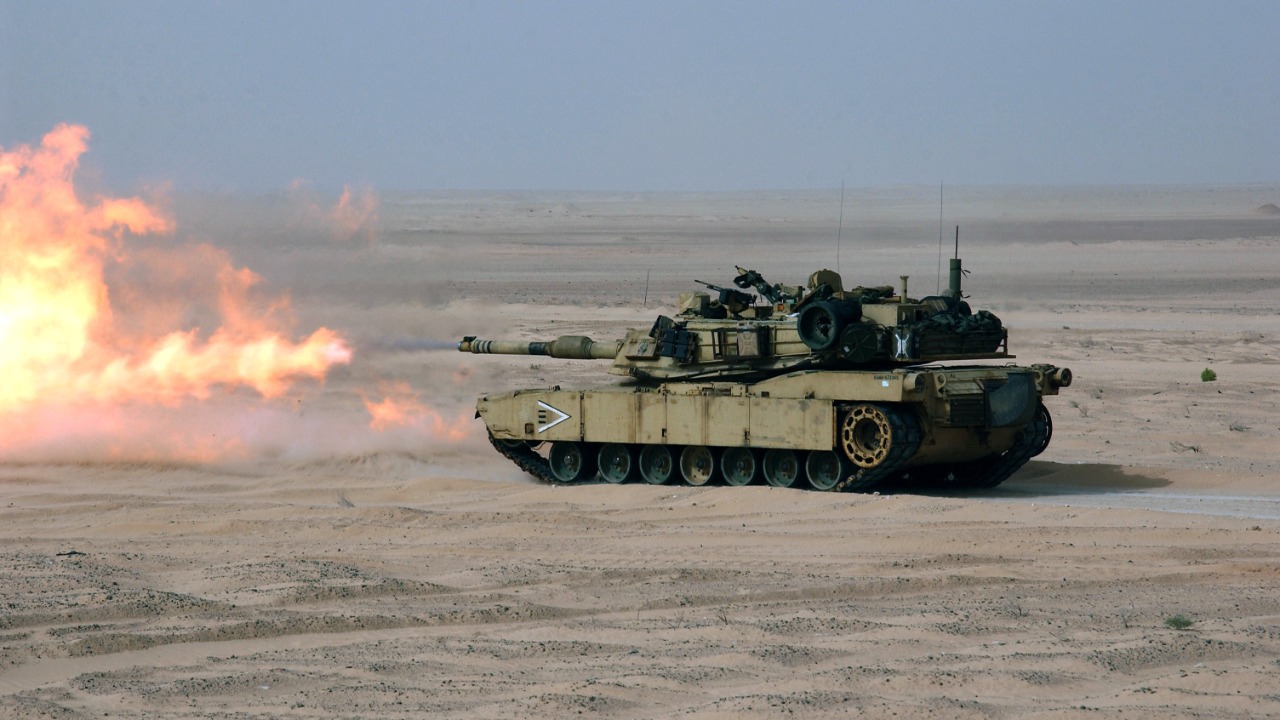
The M1 Abrams tank, a stalwart of the U.S. Army, was conceived during the Cold War era to counter the numerical superiority of Soviet armored forces. It was designed with advanced composite armor and a 120mm smoothbore gun to engage high-velocity T-72 tanks. However, in the ongoing Ukraine War, the M1A1 Abrams variant has faced significant challenges, with some reports labeling it a “total loser” due to vulnerabilities against modern drones and minefields. Despite these setbacks, the tank is far from obsolete. U.S. Army officials have responded to the losses by emphasizing ongoing upgrades, while Ukraine received a major boost of additional Abrams tanks from Australia in July 2025.
Origins in Cold War Strategy
The M1 Abrams’ development in the 1970s and 1980s was a direct response to the threat of massive Soviet tank armies. Lessons from NATO exercises simulating Eastern European battlefields were incorporated into its design. The tank’s emphasis on mobility and firepower was tailored for rapid armored thrusts against Russian forces. Its turbine engine, capable of enabling speeds up to 45 mph, was designed to outmaneuver Warsaw Pact armor. This strategic focus was rooted in U.S. Army procurement decisions aimed at deterring a full-scale invasion across the Fulda Gap, a key Cold War flashpoint in central Germany [source].
Key Design Features for Anti-Russian Warfare
The M1 Abrams was engineered with Chobham composite armor and depleted uranium layers to withstand hits from Soviet 125mm guns on T-64 and T-80 tanks. The 120mm M256 gun was designed to penetrate Russian reactive armor at standoff ranges. Autoloader alternatives were considered but ultimately rejected for crew safety. The tank was also equipped with thermal imaging and laser rangefinder systems to give Abrams crews an edge in low-visibility conditions typical of European winters, a clear advantage over Russian optics [source].
Deployment Challenges in Ukraine
The M1A1 Abrams’ performance in the Ukraine War has been less than stellar. It has been dubbed a “total loser” due to destruction by cheap Russian drones and artillery [source]. In 2025, at least 20 tanks were reported disabled or captured near the Avdiivka and Kharkiv fronts. Logistical hurdles, such as high fuel consumption and maintenance needs, have limited its effectiveness on Ukraine’s muddy terrain.
U.S. Army’s Official Response to Losses
The U.S. Army acknowledged the Abrams losses in Ukraine in a statement on June 30, 2025, but reaffirmed the platform’s core strengths in combined arms operations [source]. The Army has committed to rapid field repairs and spare parts shipments to Ukrainian forces to mitigate attrition. It has also addressed criticisms by emphasizing that losses stem from asymmetric tactics rather than inherent design flaws against peer adversaries like Russia.
International Support and Abrams Boosts
On July 19, 2025, Australia announced a donation of 49 M1A1 Abrams tanks to Ukraine as part of a broader Western effort to bolster Kyiv’s armored capabilities [source]. Training programs for Ukrainian crews on the donated tanks have focused on integration with NATO-standard fire support. This aid reflects ongoing U.S. leadership in Abrams exports to allies preparing for potential Russian aggression in Europe.
Assessing Obsolescence Post-Ukraine
Despite the challenges faced in Ukraine, experts argue that the war has not rendered the M1 Abrams obsolete. The tank’s proven record in desert and urban fights is adaptable to Russian-style warfare [source]. Proposed upgrades include active protection systems to counter drones, drawing from lessons learned in Ukraine without overhauling the base design. Simulations show that the tank still holds superiority in open terrain battles against upgraded T-90s, indicating its future role in deterring Russia.
More from MorningOverview